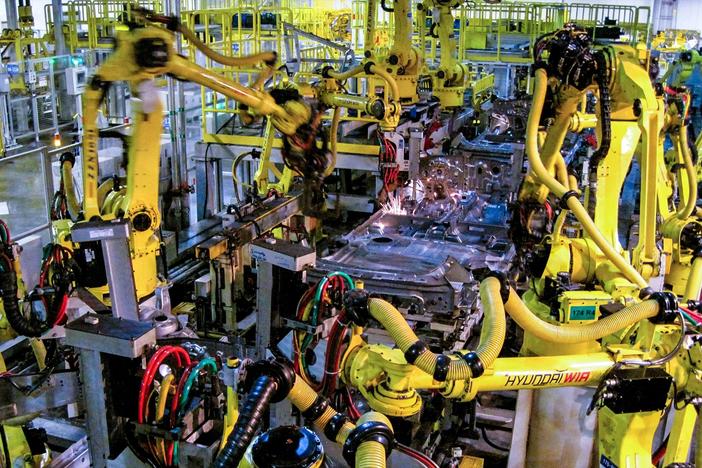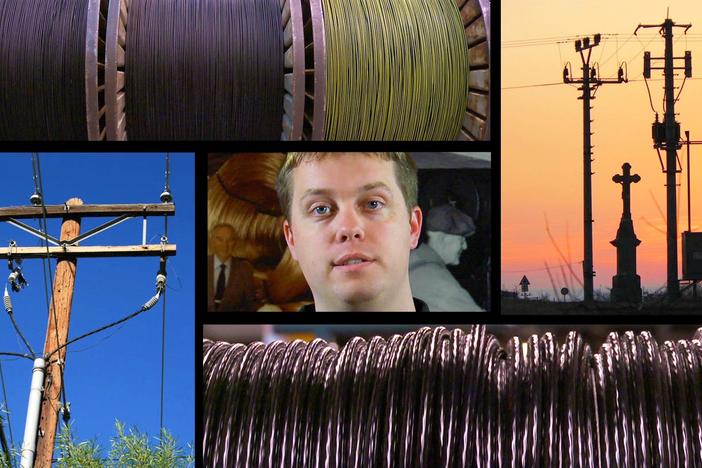Southwire
We take our search for Georgia STEM careers to Carrollton with a visit to Southwire, the largest manufacturer of wire and cable in North America. Here we cover the types of careers available at Southwire. And we shine a (well-wired) spotlight on Southwire's Engineering Academy for high school students. Teachable Moments include descriptions of electricity and root cause analysis.
Southwire
We take our search for Georgia STEM careers to Carrollton with a visit to Southwire, the largest manufacturer of wire and cable in North America. Here we cover the types of careers available at Southwire. And we shine a (well-wired) spotlight on Southwire's Engineering Academy for high school students. Teachable Moments include descriptions of electricity and root cause analysis.
Science
Obtain and combine information from multiple sources to explain the difference between naturally occurring electricity (static) and human-harnessed electricity.
Design a complete, simple electric circuit, and explain all necessary components.
Plan and carry out investigations on common materials to determine if they are insulators or conductors of electricity.
Develop models (e.g., atomic-level models, including drawings, and computer representations) by analyzing patterns within the periodic table that illustrate the structure, composition, and characteristics of atoms (protons, neutrons, and electrons) and simple molecules.
Construct an argument to support a claim about the type of energy transformations within a system [e.g., lighting a match (light to heat), turning on a light (electrical to light)].
Plan and carry out investigations to demonstrate the distribution of charge in conductors and insulators.
Plan and carry out investigations to identify the factors (e.g., distance between objects, magnetic force produced by an electromagnet with varying number of wire turns, varying number or size of dry cells, and varying size of iron core) that affect the strength of electric and magnetic forces.
Construct an explanation about the importance of molecular-level structure in the functioning of designed materials.
Plan and carry out investigations to demonstrate and qualitatively explain charge transfer by conduction, friction, and induction.
Construct an explanation based on evidence of the behavior of charges in terms of electric potential energy.
Plan and carry out an investigation of the relationship between voltage, current, and power for direct current circuits.
Plan and carry out investigations to clarify the relationship between electric currents and magnetic fields.
Use mathematical and computational thinking to support a claim regarding relationships among voltage, current, and resistance.
Develop and use models to illustrate and explain the conventional flow (direct and alternating) of current and the flow of electrons in simple series and parallel circuits.
Plan and carry out investigations to determine the relationship between magnetism and the movement of electrical charge.
Construct explanations for energy transformations within a system.
Social Studies
Evaluate the economic impact of various industries in Georgia including agricultural, entertainment, manufacturing, service, and technology.
Explain how investments in human capital (e.g., education, job training, and healthcare) can lead to a higher standard of living.
1. Why is root cause analysis so important?
2. If English/Language Arts represents part of the "A" in STEAM, how can studying English benefit an engineer?
Electron: a very small particle of matter that has a negative charge of electricity and that travels around the nucleus of an atom
Electricity: a form of energy that is carried through wires and is used to operate machines, lights, etc.
Current: a flow of electricity
Voltage: the force of an electrical current that is measured in volts
Engineering: the work of designing and creating large structures (such as roads and bridges) or new products or systems by using scientific methods
Mentor: someone who teaches or gives help and advice to a less experienced and often younger person
Root Cause Analysis: a method of problem solving used for identifying the root causes of faults or problems
Gauge: an instrument that is used for measuring something
-
Special Thanks
Gary Leftwich, Carol Godfrey, Charles Holcombe, Kasey Austin, Mike Schmittou, Javeese Smith, Stephen Spruell, City of Carrolton
This content was developed under a grant from the U.S. Department of Education. However, this content does not necessarily represent the policy of the U.S. Department of Education, and you should not assume endorsement by the Federal Government.























